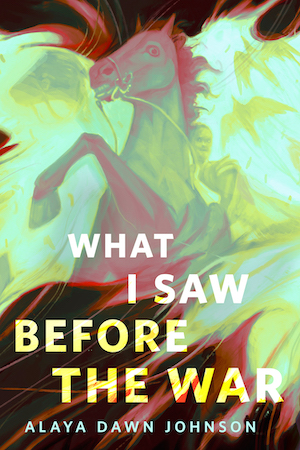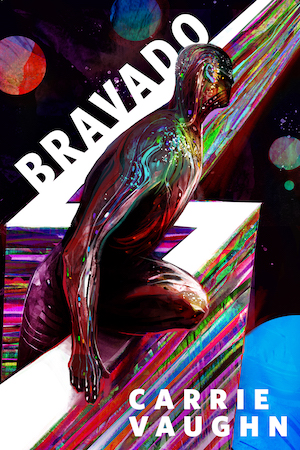What is it about San Francisco? Out of all the cities in the world, that golden port seems to attract some of our most forward-thinking writers. Even if it only served as the headquarters for Starfleet and the foundation point of The United Federation of Planets, that would mark it as a hub of speculative fiction, but it has also given a setting to some of our favorite novels and novellas.
From futuristic gumshoes to magical happenings on the BART, here are ten stories that turn San Francisco into an SFF playground.
Passing Strange by Ellen Klages
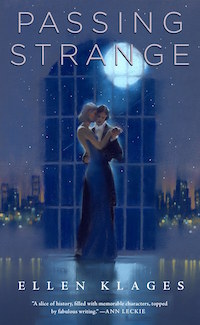 San Francisco has always been a beacon of hope for non-conformists, artists, and poets. Set in 1940, Klages’ San Francisco features whimsical cities within the City—The Magic City of the World’s Fair glitters atop an island created from artifice and illusion; Chinatown is a self-contained world bursting with “exotic” food and enticing nightclubs—where people can experience pulp adventures and find true love away from the prying eyes of conventional society.
San Francisco has always been a beacon of hope for non-conformists, artists, and poets. Set in 1940, Klages’ San Francisco features whimsical cities within the City—The Magic City of the World’s Fair glitters atop an island created from artifice and illusion; Chinatown is a self-contained world bursting with “exotic” food and enticing nightclubs—where people can experience pulp adventures and find true love away from the prying eyes of conventional society.
In this San Francisco, six women will discover that their lives are entangled in ways they never could have predicted, and that life and love in this city are far more mysterious than they ever thought possible.
Gun, With Occasional Music by Jonathan Lethem
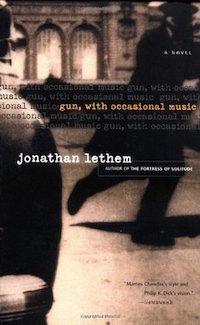 Lethem’s now-classic update on San Francisco noir features a hardboiled, highly sarcastic detective named Metcalf, a murder, and a conspiracy that might just go all the way to the top. But this version of San Francisco also features uplifted animals (like the Mafiosi kangaroo Metcalf keeps running into), mature babies with their own subculture, and quantifiable karma that people use as social credit—when you use up all your karma, you have to go to cryo-sleep until you pay it off. Against this background, Metcalf attempts to solve the murder of Maynard Stanhunt, despite the fact that no one seems to want him to solve it. And, oh yeah, in this universe asking questions is socially unacceptable, and detectives are utter pariahs. Did I mention that guns literally play disturbing music when you draw them? Gun, With Occasional Music was nominated for a Nebula Award in 1994.
Lethem’s now-classic update on San Francisco noir features a hardboiled, highly sarcastic detective named Metcalf, a murder, and a conspiracy that might just go all the way to the top. But this version of San Francisco also features uplifted animals (like the Mafiosi kangaroo Metcalf keeps running into), mature babies with their own subculture, and quantifiable karma that people use as social credit—when you use up all your karma, you have to go to cryo-sleep until you pay it off. Against this background, Metcalf attempts to solve the murder of Maynard Stanhunt, despite the fact that no one seems to want him to solve it. And, oh yeah, in this universe asking questions is socially unacceptable, and detectives are utter pariahs. Did I mention that guns literally play disturbing music when you draw them? Gun, With Occasional Music was nominated for a Nebula Award in 1994.
Dark Cities Underground by Lisa Goldstein
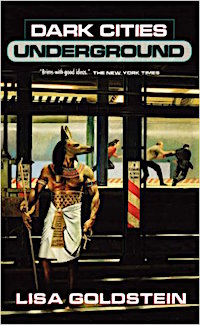 Those of you who never expected to find anything magical on BART are in for a shock. While Goldstein’s eighth novel travels our own mundane world as well as a variety of “fantasy” worlds, it starts off in Oakland, California. Ruthie Berry needs to interview the famous Jeremy Jones, whose mother wrote a series of children’s book about a fantasy world he made up when he was a kid. There are a few problems, though: Jeremy Jones is now calling himself Jerry, has no memory of telling his mother the stories, and really doesn’t want to discuss his past; the fantasy world he made up is actually real; all the fantasy worlds you’ve ever read about are real, and connected by magical portals in the worlds’ subway systems. Ruthie and Jerry must go on an often terrifying journey into Jerry’s childhood to answer the questions of the present, and the only way to get there is to go underground.
Those of you who never expected to find anything magical on BART are in for a shock. While Goldstein’s eighth novel travels our own mundane world as well as a variety of “fantasy” worlds, it starts off in Oakland, California. Ruthie Berry needs to interview the famous Jeremy Jones, whose mother wrote a series of children’s book about a fantasy world he made up when he was a kid. There are a few problems, though: Jeremy Jones is now calling himself Jerry, has no memory of telling his mother the stories, and really doesn’t want to discuss his past; the fantasy world he made up is actually real; all the fantasy worlds you’ve ever read about are real, and connected by magical portals in the worlds’ subway systems. Ruthie and Jerry must go on an often terrifying journey into Jerry’s childhood to answer the questions of the present, and the only way to get there is to go underground.
The City, Not Long After by Pat Murphy
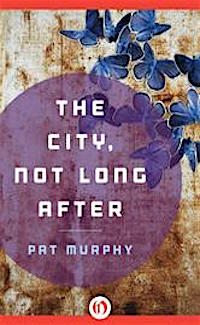 Twenty years after a plague wipes out Earth’s population, San Francisco has become a utopian haven for artists and non-conformists who are seeking a meaningful life in the midst of death. Unfortunately, an autocratic general nicknamed Fourstar is building a military empire in the Valley—he already has Sacramento, Fresno, and Modesta, and he plans to annex San Francisco next. A young woman follows a vision to the city, and warns the inhabitants of the General’s plans… but what hope is there for a group of peaceful artists against an army?
Twenty years after a plague wipes out Earth’s population, San Francisco has become a utopian haven for artists and non-conformists who are seeking a meaningful life in the midst of death. Unfortunately, an autocratic general nicknamed Fourstar is building a military empire in the Valley—he already has Sacramento, Fresno, and Modesta, and he plans to annex San Francisco next. A young woman follows a vision to the city, and warns the inhabitants of the General’s plans… but what hope is there for a group of peaceful artists against an army?
Luckily, the ghosts of San Francisco have no intention of giving up on their city, and soon the artists are finding help in a most unusual place: the city’s past.
Delia’s Shadow by Jamie Lee Moyer
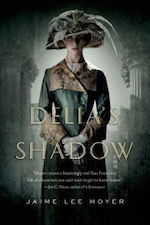 Set in 1915, Moyer’s historical fantasy series imagines a San Francisco teeming with ghosts, seeking the one woman who can see them. From a young age, Delia Martin has been able to see the spirits of the dead, especially in the aftermath of the 1906 earthquake. She flees to the other side of the continent, hoping to gain some peace, until one determined specter appears and Delia realizes that she must return to the City by the Bay in order to put this tortured soul to rest. As her psychic powers grow, Delia faces new and more dangerous threats, but always manages to pull through with some help from San Francisco’s spectral populous.
Set in 1915, Moyer’s historical fantasy series imagines a San Francisco teeming with ghosts, seeking the one woman who can see them. From a young age, Delia Martin has been able to see the spirits of the dead, especially in the aftermath of the 1906 earthquake. She flees to the other side of the continent, hoping to gain some peace, until one determined specter appears and Delia realizes that she must return to the City by the Bay in order to put this tortured soul to rest. As her psychic powers grow, Delia faces new and more dangerous threats, but always manages to pull through with some help from San Francisco’s spectral populous.
“Three Septembers and a January” in The Sandman: Fables & Reflections, by Neil Gaiman
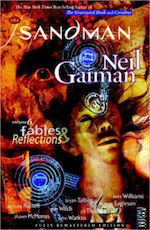 This charming issue of Neil Gaiman’s classic comic series tells us the tale of Joshua Abraham Norton, first, last and only Emperor of the United States of America. Despair and Dream make a Job-like wager over Norton, with Despair betting she’ll claim him by suicide, and Dream saying that stories will save his life. Inspired by Dream, Norton declares himself Emperor, and the residents of San Francisco gamely play along. People celebrate him, his home-printed currency is accepted at bars and restaurants across the city, and after he’s (spoiler alert) collected by Dream’s Big Sister, his funeral is attended by about 30,000 people, forming a cortège two miles long. Keep in mind that San Francisco’s total population was about 230,000 at the time. The best part? This is a true story.
This charming issue of Neil Gaiman’s classic comic series tells us the tale of Joshua Abraham Norton, first, last and only Emperor of the United States of America. Despair and Dream make a Job-like wager over Norton, with Despair betting she’ll claim him by suicide, and Dream saying that stories will save his life. Inspired by Dream, Norton declares himself Emperor, and the residents of San Francisco gamely play along. People celebrate him, his home-printed currency is accepted at bars and restaurants across the city, and after he’s (spoiler alert) collected by Dream’s Big Sister, his funeral is attended by about 30,000 people, forming a cortège two miles long. Keep in mind that San Francisco’s total population was about 230,000 at the time. The best part? This is a true story.
Altered Carbon by Richard Morgan
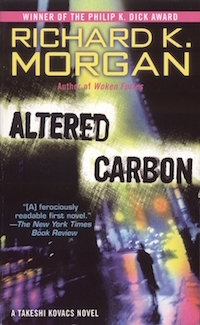 Altered Carbon, which won the Philip K. Dick Award for Best Novel in 2003, again digs into noir tropes to look at the future. Humans have developed a way to (kind of, sort of) live forever: people’s memories and personalities are stored as digital files and “resleeved”—uploaded into a new body—upon death. Unfortunately resleeving is expensive, so most people only do it a few times rather than have to experience the aging process repeatedly. Some religious people opt out of resleeving since they believe their souls will go on to an afterlife, which makes them vulnerable to murder. After all, if they’re truly dead, they can’t exactly appear in court to accuse their murderer, can they?
Altered Carbon, which won the Philip K. Dick Award for Best Novel in 2003, again digs into noir tropes to look at the future. Humans have developed a way to (kind of, sort of) live forever: people’s memories and personalities are stored as digital files and “resleeved”—uploaded into a new body—upon death. Unfortunately resleeving is expensive, so most people only do it a few times rather than have to experience the aging process repeatedly. Some religious people opt out of resleeving since they believe their souls will go on to an afterlife, which makes them vulnerable to murder. After all, if they’re truly dead, they can’t exactly appear in court to accuse their murderer, can they?
Those lucky rich folks who can keep resleeving indefinitely are called Meths (short for Methuseleh) and also keep separate files of their minds in case their memories are damaged. Richard Morgan’s story begins when a military operative named Takeshi Kovacs wakes up in San Francisco. He realizes he was killed off-planet and is now in a new sleeve. He also learns that he’s being offered a job: Laurens Bancroft, a Meth who apparently committed suicide, has no memory of the past 48 hours and believes he was murdered. Can Kovacs crack a case when the victim can’t remember the past two days, and may not have been murdered at all?
Do Androids Dream of Electric Sheep? by Philip K. Dick
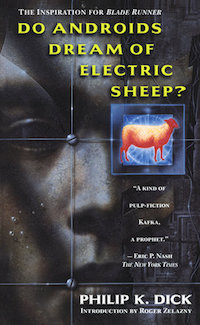 Philip K. Dick’s classic SF-noir mashup set a bar for an entire subgenre while musing on empathy and the nature of existence. Bounty hunter Rick Deckard takes an assignment in the hopes that he’ll earn enough to buy his wife a living animal. Because the Earth has been irradiated and many animals have gone extinct, only the rich are able to keep pets, and all the Deckards can afford is a robotic black-faced sheep. Deckard’s job, hunting down six Nexus-6 androids, forces him to confront the meaning of his own consciousness ,and the truth of Mercerism, a religion that emphasizes the separation between human and android.
Philip K. Dick’s classic SF-noir mashup set a bar for an entire subgenre while musing on empathy and the nature of existence. Bounty hunter Rick Deckard takes an assignment in the hopes that he’ll earn enough to buy his wife a living animal. Because the Earth has been irradiated and many animals have gone extinct, only the rich are able to keep pets, and all the Deckards can afford is a robotic black-faced sheep. Deckard’s job, hunting down six Nexus-6 androids, forces him to confront the meaning of his own consciousness ,and the truth of Mercerism, a religion that emphasizes the separation between human and android.
Deckard’s hunt takes him through all the twists and corruption that noir usually features, but here the femme fatale is an android who may or may not be in love with him, the prophet Mercer might be guiding him through visions, and the only reason he’s trying to “retire” androids is to buy his depressed wife a goat.
Salvage And Demolition by Tim Powers
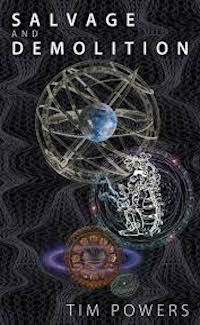 So many of the titles on this list riff on San Francisco’s noir tradition that it’s nice to find one that explores the city’s relationship to poetry. Richard Blanzac is a rare book dealer living in 2012, and he’s used to sifting through piles of dross in search of literary classics. When he receives a box from the niece of a little-known poet Sophia Greenwald, he’s ecstatic to find an autographed copy of Howl under a pile of cigarette butts. There is also an old Ace Double Novel, and copies of Greenwald’s own poetry.
So many of the titles on this list riff on San Francisco’s noir tradition that it’s nice to find one that explores the city’s relationship to poetry. Richard Blanzac is a rare book dealer living in 2012, and he’s used to sifting through piles of dross in search of literary classics. When he receives a box from the niece of a little-known poet Sophia Greenwald, he’s ecstatic to find an autographed copy of Howl under a pile of cigarette butts. There is also an old Ace Double Novel, and copies of Greenwald’s own poetry.
Before he can figure out what to do with it, however, Greenwald’s literary executor insists that he must destroy every copy of the poems (which seems an odd request from a literary executor) and before he can process that, he realizes his office is dissolving around him, and finds himself in San Francisco, in 1957, speaking to the much-younger literary executor, who turns out to be Sophia Greenwald herself. And she still needs him to destroy her poetry, because an apocalyptic cult is determined to use it to end all of existence. Which is a lot to process, and that’s before the Sumerian god gets involved…
Earth Abides by George R. Stewart
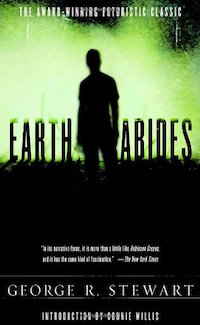 Calling this a San Francisco-based SF story is a little bit of a stretch, since the book opens after society has collapsed, and there isn’t much of a city for anyone to leave their heart in. However, the book follows the post-apocalyptic adventures of Isherwood Williams, and he happens to be a Berkeley graduate student when life in the U.S. goes pear-shaped. He’s in his research cabin in the mountains, recovering from a rattlesnake bite, when a disease wipes out most of humanity. He gradually learns the enormity of the situation as he travels back toward San Francisco, finding abandoned cars, homes, and even bodies on the way. When he meets a fellow survivor, a woman named Em, the two try to rebuild together. But are there any others? And even if there are, can a tiny group of San Franciscans save humanity?
Calling this a San Francisco-based SF story is a little bit of a stretch, since the book opens after society has collapsed, and there isn’t much of a city for anyone to leave their heart in. However, the book follows the post-apocalyptic adventures of Isherwood Williams, and he happens to be a Berkeley graduate student when life in the U.S. goes pear-shaped. He’s in his research cabin in the mountains, recovering from a rattlesnake bite, when a disease wipes out most of humanity. He gradually learns the enormity of the situation as he travels back toward San Francisco, finding abandoned cars, homes, and even bodies on the way. When he meets a fellow survivor, a woman named Em, the two try to rebuild together. But are there any others? And even if there are, can a tiny group of San Franciscans save humanity?
Earth Abides won the inaugural International Fantasy Award in 1951.
Land of Dreams by James P. Blaylock
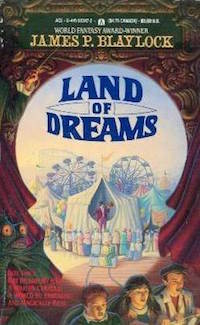 James Blaylock’s Land of Dreams isn’t quite set in San Francisco either…but we hate to leave Blaylock off a list of California SFF, so we’re going to allow it. Land of Dreams takes place in a coastal town in Northern California, just as the 12-year Solstice begins. The townsfolk celebrate this natural event with a decidedly supernatural carnival, and the book starts off on the right foot when thee local kids discover an impossibly large shoe.
James Blaylock’s Land of Dreams isn’t quite set in San Francisco either…but we hate to leave Blaylock off a list of California SFF, so we’re going to allow it. Land of Dreams takes place in a coastal town in Northern California, just as the 12-year Solstice begins. The townsfolk celebrate this natural event with a decidedly supernatural carnival, and the book starts off on the right foot when thee local kids discover an impossibly large shoe.
The three kids, orphans Skeezix and Helen, and their friend Jack Portland, are pulled into a larger mystery after the carnival comes to town, chugging along tracks that collapsed into the sea years ago, but which somehow pull themselves back together in time for the Solstice. If you thought that maybe the carnival is ominous? And that the proprietor, Dr. Brown isn’t quite what he seems? And that there’s a sort of Ray Bradury-ish theing going on here? You are correct. The novel is also set in the same magical world as Blaylock’s short story, “Paper Dragons”, which was included in Robin McKinley’s Imaginary Lands.
Top image: Star Trek IV: The Voyage Home


